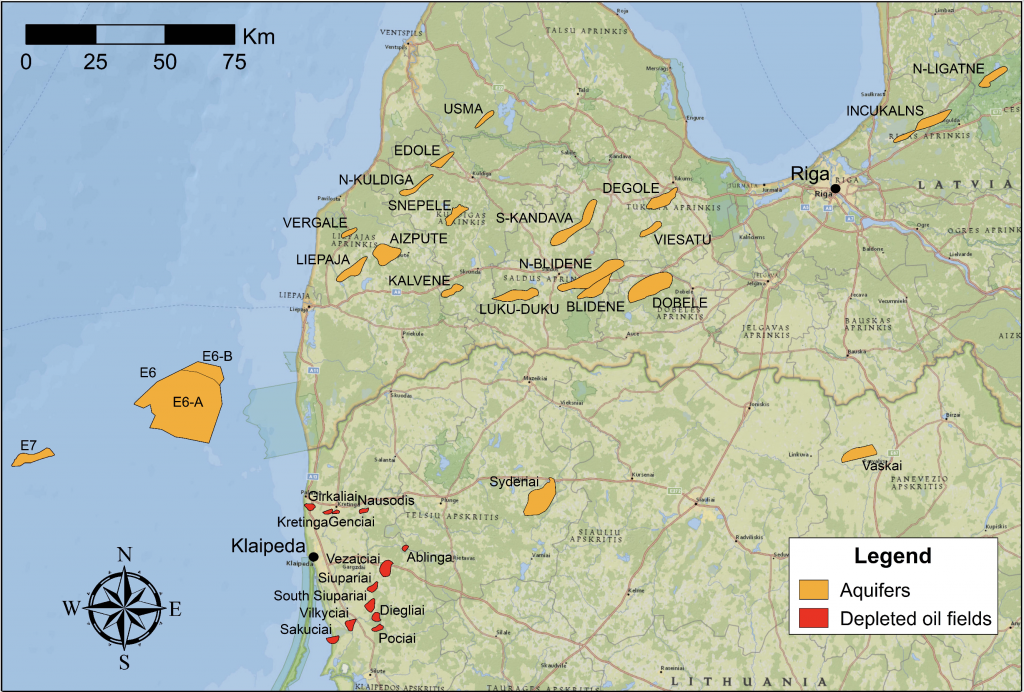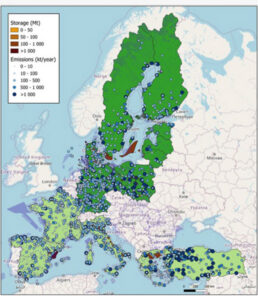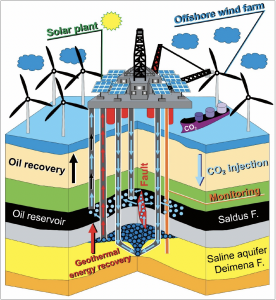Underground Hydrogen Storage in the Baltic Countries: Future Outlook for Latvia and Estonia
Authors: K. Shogenov1, A. Shogenova1, S. Šliaupa2
Affiliations:
1 Tallinn University of Technology (TalTech)
2 Nature Research Centre and Vilnius University
Publisher: European Association of Geoscientists & Engineers
Source: Conference Proceedings, 83rd EAGE Annual Conference & Exhibition, Jun 2022, Volume 2022, p.1 – 5
DOI: https://doi.org/10.3997/2214-4609.202210772
Suggested citation: Shogenov, K.; Shogenova, A.; Šliaupa, S. 2022. Underground Hydrogen Storage in the Baltic Countries: Future Outlook for Latvia and Estonia. 83rd EAGE Annual Conference & Exhibition: 83rd EAGE Annual Conference & Exhibition, Madrid, 6-9 June 2022. European Association of Geoscientists & Engineers, 1−5. DOI: 10.3997/2214-4609.202210772.
Summary
For the first time, we discuss geological structures in the Baltic States in the Latvian sedimentary basin perspective for hydrogen storage in a term of geographical location, petrophysical and geochemical properties, and storage capacity.
The best geological conditions for underground storage of gases are available in Latvia in the Cambrian Series 3 Deimena Formation sandstones.
Proposed 17 structures mostly located in western Latvia, including 16 onshore and one offshore structure also have good parameters, including location, area, quality, sealing by clayey rocks (shale) of Ordovician Zebre Formation, and significant capacity for hydrogen storage calculated in the presented study.
Hydrogen storage capacity in the studied structures was estimated as 0.036–0.23 Mt and the total underground storage capacity is estimated as 1.9 Mt of hydrogen.
The largest among onshore structures – Dobele and North-Blidene are now under consideration by the largest Latvian energy and industrial companies for CO2 storage. We suppose that these structures will provide enough capacity both for CO2 and hydrogen storage, sometimes, working in synergy.
As an example, we propose using E6-B, the smaller part of the E6 offshore structure, for hydrogen storage, while the larger part (E6-A) is very suitable for CO2
storage and geothermal energy recovery.
Figure 1 Location of structures suitable for Underground Hydrogen Storage in Latvia and Lithuania. Aquifer structural traps are shown in orange, while oil fields are shown in red. The most suitable for UHS offshore Latvia is the E6-B structure.





